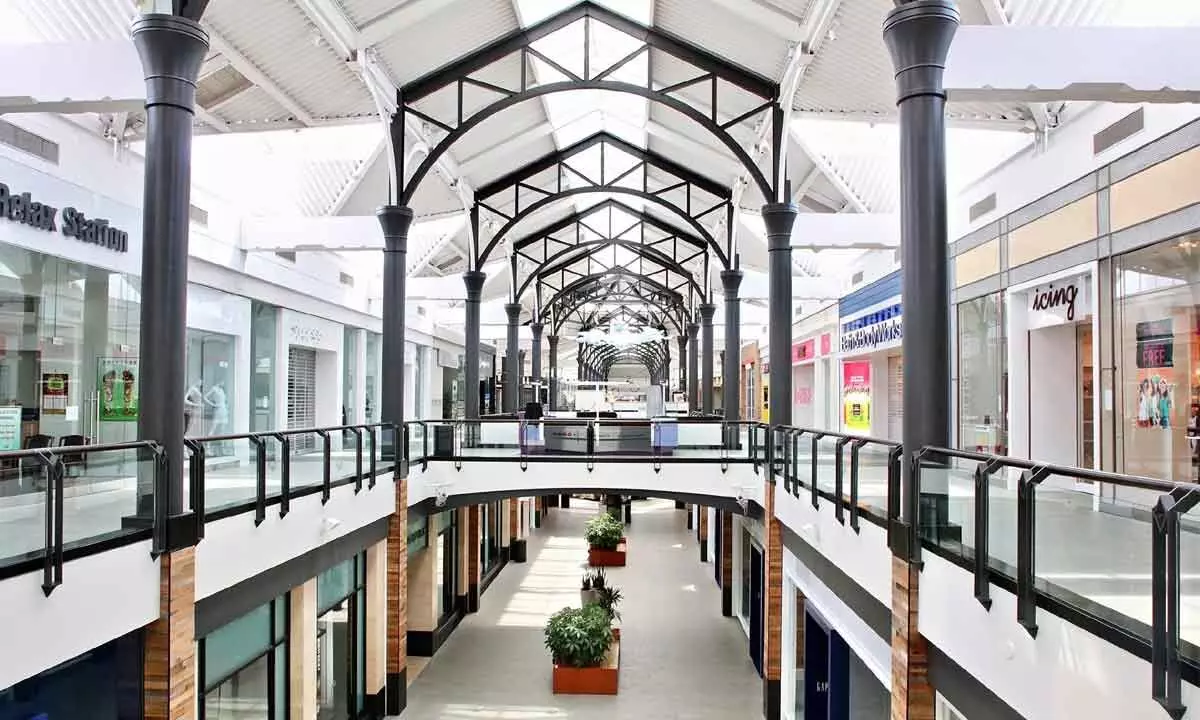22% retail space vacant in Hyderabad

22% retail space vacant in Hyderabad
The vacancy levels of Grade A mall stock is only 4%: Knight Frank India
Hyderabad: Hyderabad has 7.2 million sft of gross leasable area (GLA) of shopping mall stock as of January-June (H1) 2022, international property consultant Knight Frank India said in its latest report 'Think India, Think Retail 2022 – Reinventing Indian Shopping Malls'. The city has the highest percentage share of Grade A across the top eight markets of India.
The Grade-wise mall stock data shows the share of Grade A in the Hyderabad market at 52 per cent (3.9 million sft). The share of Grade B and C malls stood at 21 per cent (1.57 million sq ft) and 27 per cent (2.02 million sq ft) respectively. As per the property consultant, there are more vacancy levels in Grade B and C malls, but Grade A malls have less vacancy in the city.
"As a result of the previous mistakes of the commercial builders, the vacancy levels in Grade B and C malls are higher in Hyderabad. Only those malls that were constructed in wrong locations of the city are lying idle," says Gulam Zia, Senior Executive Director - Research, Advisory, Infrastructure, and Valuation Executive Director, Knight Frank India.
"The occupancy of shopping malls stood at 6 million sft in Hyderabad as of H1 2022. About 22 per cent GLA is vacant in the city, which is higher when compared to the national average of 17 per cent. However, the vacancy levels in Grade A malls have dropped down to 4 per cent," Vivek Rathi, Senior Vice President – Research, Knight Frank India, told The Hans India.
He further said, "Whenever national or global level retailers look at the city market, they would like to consider these aspects and decide accordingly. During Covid times, the retail and hospitality sectors suffered the biggest losses. Despite restrictions, still leasing activity happened in the city. It has better opportunity for new developments and supply accordingly as per the needs of the shoppers."
As per Knight Frank India, the share of e-commerce space in warehousing segment has also improved in the recent past. During the pandemic, e-commerce was the primary or only choice of the customers. Now, things have changed and there is a strong demand for quality mall space in the city as well as across the country.
Vivek says, "Post pandemic, vacancy levels at shopping malls were marginally increased at 1 per cent in Hyderabad. If we see all over the country, the occupancy levels have gone up 20 per cent in H1 2022 when compared to the corresponding period in 2019. Revenge shopping or pent-up demand could be the reasons behinds this."
The country is witnessing strong growth in consumption. This is an indication that e-commerce will not take up the share from offline segment. The loss of brick-and-mortar stores was already filled up by the leasing of warehousing space. This year, the leasing of warehousing space has also moderated, he informed.
As per the report, between FY 2017-22, sales volume in the organised retail sector grew at a CAGR of 24 per cent reaching $52 billion across top eight cities in India. Furthermore, in the next five years between FY 2023 – 2028, organised retail sales volume is projected to grow at a CAGR of 17 per cent reaching $136 billion. Between FY 2017-22, consumption in shopping malls across these cities grew at a CAGR of 3 per cent and stood at $8 billion in FY 2022. In FY 2023, the potential consumption is estimated to cross the pre-Covid levels reaching $11 billion. The potential consumption in malls is forecasted to grow at a CAGR of 29 per cent in between FY 2022-28 and is estimated to be at $39 billion in FY 2028.
















